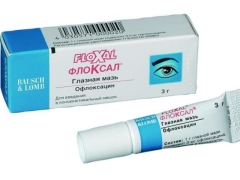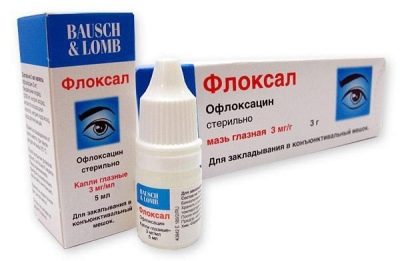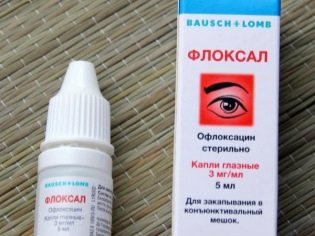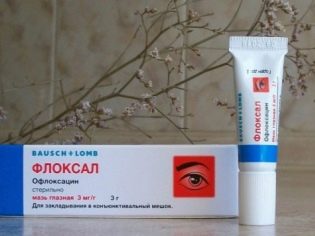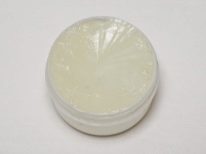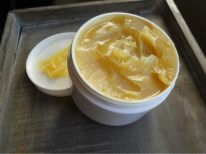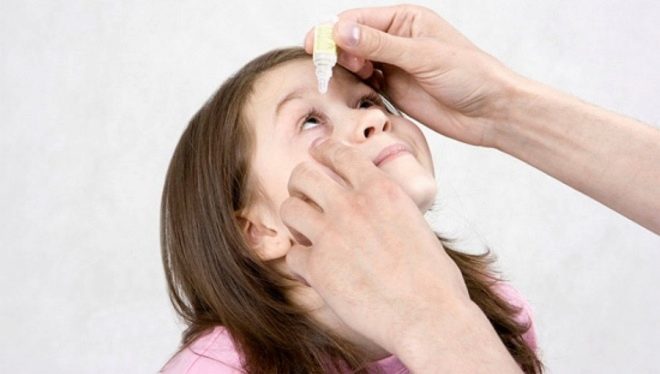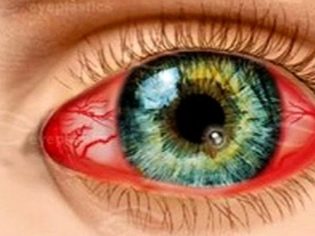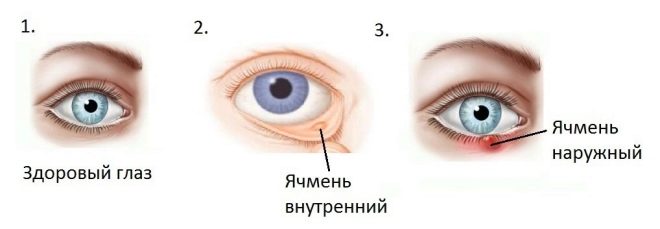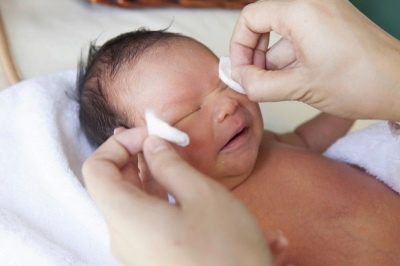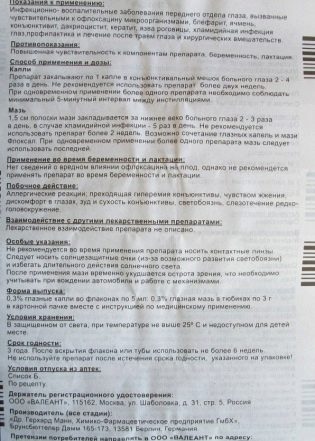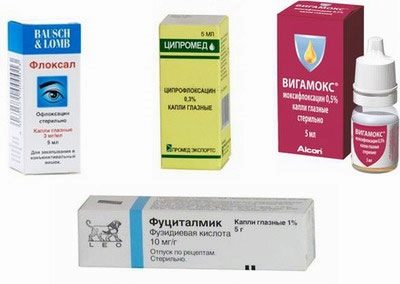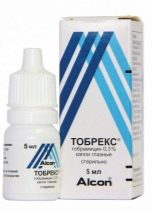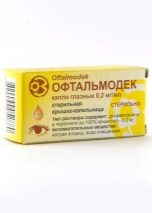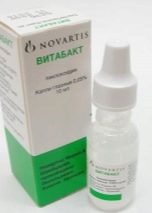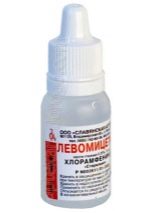Floksal for children: instructions for use
Floxal is a topical antibiotic that is prescribed for conjunctivitis, keratitis, and other eye diseases triggered by harmful bacteria. Is it possible to use such a medicine in childhood and under what pathologies it will be effective, what dosages are prescribed for children and how long can it be treated with this remedy, how to replace Floxal, if such medicine did not work out or an allergic reaction occurred to it - exciting questions can be found in this article.
Release form
Floxal is presented in pharmacies by two types of medication.
- Eye drops. This form of the drug is a sterile clear yellow solution. It is packaged in vials-droppers in the amount of 5 milliliters in one package.
- Eye ointment. Such a variant of Floxal is a yellow homogeneous mass, packed in tubes of 3 grams each.
Composition
Both versions of the drug as of the active substance contain ofloxacin. Its amount in 1 gram of ointment and in 1 ml drops is 3 mg, therefore, the concentration of ofloxacin in each form of the drug is 0.3%.
Additionally, in the liquid drug is sodium chloride, hydrochloric acid and benzalkonium chloride. The composition of the drops also include sterile water and sodium hydroxide. The ointment, in addition to ofloxacin, contains white petrolatum and wool fat, as well as liquid paraffin.
Mechanism of action
"Floksal" refers to antimicrobial drugs of the fluoroquinolone group with a rather extensive spectrum of effects. Under his influence, the bacteria die, that is, this remedy is bactericidal. The bacteria-destroying effect of Floxal is associated with the ability of ofloxacin to block enzymes in pathogen cells called DNA-gyrases.
The drug has a high activity against most Gram-negative microorganisms, among which are Salmonella, Klebsiella, Chlamydia, Gonococcus, Citrobacterium, Proteus, Mycoplasma and many other pathogens.
"Floxal" also acts on some streptococci and staphylococci, and the sensitivity of pseudomonads, enterococci and pneumococci to this medicine is called moderate. It should also be noted that anaerobic microbes are resistant to this medication, but they practically do not provoke eye diseases.
The therapeutic effect of the use of "Floksal" appears quickly (the drug begins to act within 10 minutes) and lasts up to 6 hours. The drug penetrates well into the eye tissue, but is absorbed into the blood in the smallest amount, so this medicine has no systemic effect on the patient’s body.
Indications
Floxal is prescribed for various eye infections caused by susceptible microorganisms. The drug is prescribed for:
- bacterial inflammation of the eyelids;
- purulent conjunctivitis;
- infection of the eyes with chlamydia;
- corneal infectious inflammation;
- barley;
- infectious inflammation of the lacrimal sac;
- ulceration on the surface of the cornea.
It can also be used prophylactically, for example, to prevent bacterial complications from an eye injury or after an operation on an organ of vision.Some ENT doctors prescribe "Floksal" in the nose with a bacterial cold.
From what age is prescribed?
Both forms of Floxal can be used in children from birth if the doctor sees the need for such treatment. Separate pediatric forms of the drug do not exist - and the ointment and drops are used in young patients in the same dosages as in adults.
Contraindications
Since the drug acts only locally, the only contraindication for Floxal is hypersensitivity to any of the components of the selected drug. The drug is not recommended for women during breastfeeding and pregnancy, as its safety in such situations has not been sufficiently studied.
Side effects
A child’s body can respond to Floxal:
- allergies;
- conjunctival redness;
- discomfort in the eyes;
- the appearance of conjunctival itching;
- dry eyes;
- the appearance of burning eyes;
- the occurrence of photophobia;
- increased tearing;
- dizziness.
If parents notice at least one of these symptoms, you should stop using the ointment or drops and show the little patient to the doctor.
Instructions for use
Treatment "Floksalom" has such features:
- before using the medication you need to wash your hands, and shake the bottle of drops;
- the liquid form is applied to each eye in one drop, for which the lower eyelid is pulled down and, pressing on the bottle, the drug is introduced into the conjunctival sac;
- the ointment is laid on the lower eyelid in the form of a strip about 1-1.5 cm long (for this, the eyelid is also pulled down);
- when the ointment is placed in the eye, you need to close the eyelids and move your eyes or lightly press the closed eyes with your fingers so that the drug is distributed on the surface of the conjunctiva evenly;
- the frequency of use of the drug - 2-3 times a day, but drops can be applied up to 4 times a day, and for chlamydial infection, treatment is performed 5 times;
- drops and ointment can be combined, but with this use, the ointment is laid last;
- sometimes the doctor prescribes a day to drip drops, and to lay ointment at night;
- the duration of treatment is not more than 14 days.
Overdose and drug interactions
Cases of the negative effect of excess droplets or ointments on the human body to date have not been. Since the drug acts only at the site of use, it does not affect the treatment with other medicines, but when using several local remedies, it is necessary to drip or put them into the eyes with an interval of 5 minutes.
Terms of sale and storage
Buy "Floksal" can only prescription, so before treatment with this tool requires consultation with an ophthalmologist. The average price of a bottle of drops is 200 rubles, and one tube of ointment costs about 150 rubles.
It is recommended to keep the drug at home in a place hidden from children, where the temperature above +25 degrees will not work on the tube and bottle. The shelf life of a sealed Floksal is 3 years, but if a bottle or tube is opened, it is reduced to 6 weeks.
One and a half months after the first use, the medication must be discarded, even if there is still a solution or ointment inside. The use of expired drugs in children is unacceptable.
Reviews
On the use of "Floksala" speak mostly positively. Advantages of drugs consider the possibility of use in children, a good therapeutic effect and rare side effects. Only occasionally mention the appearance of irritation, allergies or other negative effects of the drug. In single reviews, there is no improvement after using drops or ointment. Often among the shortcomings called the high cost and short shelf life after opening the package.
Analogs
If you need to replace "Floksal" drug with the same active ingredient, the doctor may recommend a drop of "Uniflox" or "Danzil". They also contain ofloxacin and can be used at any age for bacterial eye diseases.In addition, these drops are simultaneously aural and are prescribed for children otitis 1 and older. Ofloksatsin ointment can also be a substitute for Floxal, but it is recommended to be used since 15 years.
Instead of ofloxacin preparations, other fluoroquinolones can be used, in which they note the same mechanism of action as that of Floxal. For example, an ophthalmologist may prescribe a child a drop of “Oftakviks”, “L-Optik Rompharm” or “Signaturef”. They all contain levofloxacin and can be used in children older than a year. No less in demand and drugs based on ciprofloxacin - "Tsiprolet" or "Cypromed". They are also available in the form of eye drops and can be prescribed for eye infections from 1 year onwards.
In a situation when a child has a hypersensitivity to fluoroquinolones, for the treatment of conjunctivitis, barley and other bacterial eye lesions local products may be used with another active substance, for example:
- «Tobrex"- medicine in drops, which contains tobramycin and can be used in children of any age;
- «Vitabact"- droplets on the basis of picloxidine, approved from birth;
- "Oftadek" - decametoxin-containing antiseptic, which is used at any age;
- “Sofradex” - drops prescribed to children over 1 year old, which contain dexamethasone and two antibacterial components;
- "Sulfacyl sodium" - a well-known drug from the group of sulfonamides, used even in newborns;
- «Okomistin"- Miramistina-based antiseptic, prescribed from the age of 3;
- «Levomycetin"- drops with antibacterial action that can be used even in infants.
How to drop a drop into the eyes of a child, see the following video.
